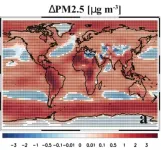With the development of human space technology, planetary exploration has become one of the most important space exploration activities of mankind. As of December 2021, a total of 252 planetary probes have been launched around the world. The missions reveal the deep space to humankind. In the new paper published in the journal Space: Science & Technology, Yixin Sun et al review some advances in planetary science made by these missions in the past years.
1.Research Advances in Terrestrial Planets
1. Mercury
Mercury is the closest planet to the Sun and the smallest planet in our solar system in terms of volume and mass. It has a similar internal structure to Earth, with a crust, mantle, and core. The density of Mercury is deduced to be about 5.4 g/cm3. The high density suggests that Mercury consists of a large fraction of metallic elements, such as iron and aluminum. Many ridges and scraps on Mercury indicate that there may have been global contractions in the interior of Mercury. One of the most well-known scraps is Carnegie Rupes.
Above its surface, Mercury holds an extremely thin atmosphere due to its weak gravity and high temperature. Ground-based optical measurements reveal that this atmosphere is composed of sodium (Na), magnesium (Mg), oxygen (O), and other elements. Some of these elements show a comet-like spatial distribution. The exosphere contains not only neutral atoms but also many heavy ions, including sodium, oxygen, and magnesium ions.
The Mariner 10 flyby observations in the 1970s indicate that Mercury may have a global intrinsic magnetic field at its surface, which is about 1% of that at Earth's surface. The magnetic field forms a magnetosphere in the interaction with the solar wind.
The most recent Mercury future exploration program is the BepiColombo mission, which was jointly developed by the Japan Aerospace Exploration Agency (JAXA) and the European Space Agency (ESA). It was launched on 2018 October 20 and is scheduled to start orbiting Mercury on 2025 November 5. This mission will investigate Mercury's formation, evolution, geological history, exosphere, and magnetosphere, and verify Einstein's theory of general relativity.
2. Venus
The internal structure of Venus remains unknown due to the lack of seismological and inertial measurements. Considering its similarity to Earth in density and radius, it is presumed to have an internal structure similar to that of Earth. Plenty of volcanoes are present on the surface of Venus, which may be the main pathway for Venus to release internal heat. several hotspots probably covered by magma not cooling down completely were discovered by the infrared observations with Venus Express, indicating recent volcanism.
Venus has the densest atmosphere among the 4 terrestrial planets in the solar system, and its atmospheric pressure is up to 92 bar. The major components of the atmosphere are carbon dioxide (about 96.5%) and molecular nitrogen (about 3.5%). Venus's dense atmosphere circulates at a speed that is even faster than its rotation speed. Horinouchi et al. compared the contributions of thermal tides, Rossby waves, etc. to the maintenance of the super-rotation, considering thermal tides are the predominant contributor of the atmospheric angular momentum. During the first flyby of Venus Express, a double-eye atmospheric vortex is observed in the polar region of Venus, having clear temporal evolution and complex morphology.
Although Venus does not have an intrinsic dipole magnetic field, the dense atmosphere can also prevent the solar wind from eroding its surface. The photoionized components of the atmosphere form an ionosphere, and its interaction with solar wind produces ionospheric electric currents that induce a sufficient magnetic field.
Future missions to Venus mainly include FLAGSHIP 2020, DAVINCI, and VERITAS 2030 of the US National Aeronautics and Space Administration (NASA); Shukrayaan-1 2024 of the Indian Space Research Organisation; Russian Venera-D 2029; and ESA's Envision.
3. Mars
InSight has detected over 700 marsquakes on Mars. A seismological analysis suggests that Mars has an internal structure similar to that of Earth.
Mars has an atmosphere that is much thinner than those of Earth and Venus, and its average atmospheric pressure is only less than 1% of that of Earth. The main components of the atmosphere are carbon dioxide (95.3%), nitrogen (2.7%), and argon (1.6%), plus methane and water. Geological evidence suggests that Mars may have had a dense atmosphere and surface water in the past, and is the most potentially habitable planet except for Earth.
Global, intense, and long-lasting dust storm activities are one of the key characteristics of the Martian atmosphere, which also affect the atmospheric loss. A recent global dust storm in 2018 was clearly captured by the camera onboard Mars Reconnaissance Orbiter.
Like Venus, Mars does not have an intrinsic magnetic field. The magnetic field at Mars is contributed by rock remanence mainly and also by the ionospheric electric current system.
Tianwen-1, China's first mission to Mars. It mainly aims at investigating the Martian atmosphere, ionosphere, magnetosphere, and their dynamic processes with a complete set of scientific payloads. There are several other Mars exploration missions in the next decade, including the ExoMars (2022) mission by ESA and the Russian Federal Space Agency (Roscosmos) and the Martian Moons eXploration (MMX) program by the JAXA.
2.Research Advances in Jovian Planets
1. Jupiter
Jupiter is a gas giant planet with the fifth largest distance (from near to far) from the Sun and also the largest planet in the solar system. The main components of Jupiter are hydrogen and helium, and its internal structure is still inconclusive. Because of its rapid rotation (rotation period of about 9.9 h), Jupiter is ellipse-shaped with an elongated equator. It has extremely rich atmospheric activities and an extremely strong intrinsic magnetic field.
By the measurements of the Doppler effect on radio broadcasts, Juno's measurements can determine the gravity field precisely. The results reveal that Jupiter has a north–south asymmetric gravity field, which is ascribed to atmospheric and internal flow. The atmospheric zonal wind could be as deep as 3,000 km.
With the measurements of Juno, a new spherical harmonic model (JRM09) of the magnetic field of Jupiter is obtained from vector magnetic field observations. The model describes the planet's intrinsic magnetic field much better than before, clearly showing the north–south asymmetry, especially the anomaly at the north pole.
Water on Jupiter is mainly in the form of clouds under the clouds of ammonia (NH3) and ammonium hydrosulfide (NH4SH).
Juno's measurements indicate that the atmosphere is very complex. At low latitudes, it is mainly an axisymmetric zonal cloud belt, while at high latitudes, it transforms into cyclones. In the northern hemisphere, a polar cyclone is surrounded by 8 small cyclones, while in the southern hemisphere, there are 5 small cyclones. The Great Red Spot is a hallmark of Jupiter and was discovered hundreds of years ago. It does not have a static shape and has shrunk significantly since 1879. During the observation of Juno, the Great Red Spot was also eroded by several anticyclones, which decreased its area and increased its internal rotation speed.
Up to now, the missions that are determined to explore the Jovian system mainly aim at Jupiter moons. Jupiter Icy Moons Explorer (JUICE) will detect 3 icy Galilean moons: Ganymede, Callisto, and Europa. NASA also has its exploration mission, Europa Clipper, which will study Europa's habitability and select a location for a possible landing mission.
2. Saturn
Saturn is the sixth planet in terms of the distance to the Sun, and its volume is second only to that of Jupiter. It is mainly composed of hydrogen with a small amount of helium and other elements. The strength of Saturn's planetary magnetic field is between those of Earth and Jupiter.
The eigenvibration of Saturn's inner core can cause disturbances in the surrounding gravitational field. Therefore, the density of Saturn's rings is affected not only by the moons but also by changes in Saturn's own gravitational field.
The Cassini measurements find that the Saturn kilometric radiation periods of Saturn's southern and northern hemispheres have a slight difference of around 10 min, and the periods change with time.
In view of the perfect coincidence of Saturn's magnetic and spin axes, the related mechanism is different from those of Jupiter and Earth with tilted magnetic axes rotating around their respective spin axes and thus magnetospheres wobbling at the same time.
A hexagonal structure at Saturn's north pole was first discovered by Voyager in 1981. Between 2012 and 2016, Cassini found that the color of the hexagon changed from bluish to golden possibly due to a variation in atmospheric composition caused by seasonal change.
Located on Saturn's equatorial plane, the rings are only 5 m thick. They are composed mainly of water ice, which may be discolored by contamination due to meteoroid collisions.
Giant planets' magnetospheres present a different dynamic convection mode compared to Earth's solar wind-driven magnetosphere. For the rapidly rotating magnetospheres with abundant internal plasma sources, such as Jovian and Saturnian magnetosphere. Centrifugal force dominates the magnetosphere dynamics and forms the Vasyliunas cycle.
Saturn has the most moons (82 moons) that have been confirmed among the 8 planets in the solar system. Titan is the largest moon in the Saturn system and the second-largest moon in the solar system. One mission determined for Saturn system exploration is NASA's Dragonfly aiming at landing on Titan to search for environmental and chemical changes suitable for biological survival.
3.Research Advances in Asteroids
Japan's Hayabusa-1 was launched in 2003. This launch sent the Hayabusa probe to the near-Earth S-type asteroid 25143 Itokawa and collected asteroid samples (at least 1,534 grains), which were returned to Earth in November 2010.
Following the successful sample return of Hayabusa-1, Japan launched Hayabusa-2 in December 2014 to collect samples and conduct impact experiments on the C-type asteroid Ryugu. Hayabusa-2 successfully collected a 5.4-g sample and returned it to Earth in December 2020. Its close exploration of Ryugu has also yielded important results. The surface of Ryugu is found to be covered with a large number of boulders, rather than the centimeter-scale particles presumed previously by telescopic thermal infrared observations. These boulders possess low tensile strength, which more susceptible to destruction upon Earth's atmosphere entry, and explains why few C-class asteroid-associated meteorites are found on Earth.
The US OSIRIS-REx probe aims to study Bennu, a near-Earth asteroid. It successfully obtained samples on Bennu in October 2020 and is expected to return them to Earth in 2023. This mission will dramatically improve our understanding of the physicochemical properties, orbital dynamics, and thermal properties of the near-surface composition of carbonaceous asteroids. Bennu has a very rough surface with a non-uniform distribution of boulders of different sizes. This result changes the understanding of their weathered surfaces. It requires to evaluate the surface properties of asteroids obtained by ground-based observations with thermal analysis and radar polarization ratio methods.
In addition, the author briefly presents the results of comet 67P in terms of comet nucleus shape, water and organic content, and gas production rate, and made some comments and suggestions on the detection objectives and detection formats for future asteroid missions.
END






